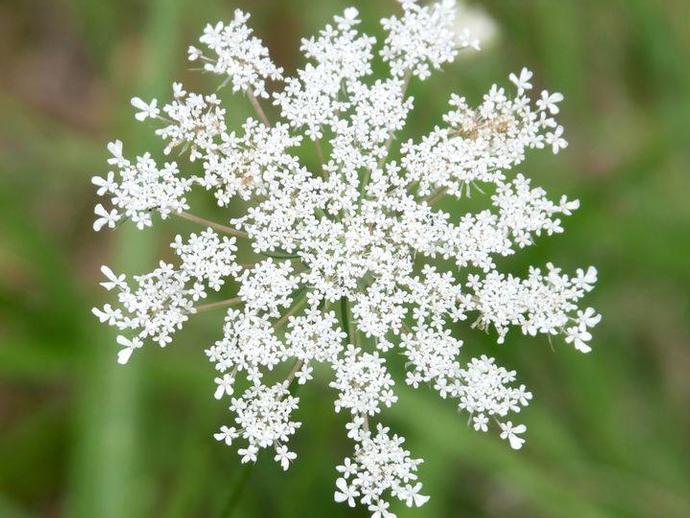September 5, 2021
We're reaching into the archives for today's #BenInNature update presented by our friends at Carter Bank & Trust! The following post was originally published on August 2, 2020.
Just like the red clover we looked at yesterday, Queen Anne's lace (Daucus carota) is one of those plants that you assume is native to the US, but it actually comes to us from Europe and Asia!
Queen Anne's lace is also known as "wild carrot," and with good reason; the domesticated carrots we enjoy are cultivars of a subspecies of this plant, Daucus carota subsp. sativus! The root of Queen Anne's lace is edible while it's young, but if you wait too long, the root will be too tough to eat. In any case, you should probably avoid it altogether, because this plant bears a striking resemblance to Conium maculatum, the poison hemlock. You definitely don't want to mess with that one; just ask Socrates.
Another neat feature of Queen Anne's lace is that if you put freshly cut flowers in a vase of water colored with food coloring, the cutting will draw the color into the flowers! You might have done this in grade school with carnations, but Queen Anne's lace is another plant that exhibits the same effect.
This plant gets its common name from either Anne, Queen of Great Britain from 1702-1707, or her grandmother, the Queen of Denmark, who ruled a century earlier. The inflorescence of these plants often has a single red flower right in the center; the story holds that Queen Anne pricked her finger while making the lace, and that red flower is a drop of her blood!
ABOUT #BenInNature
Social distancing can be difficult, but it presents a great opportunity to become reacquainted with nature. In this series of posts, Administrator of Science Ben Williams ventures outdoors to record a snapshot of the unique sights that can be found in the natural world. New updates are posted Monday - Friday, with previous posts highlighted on the weekends. This series of posts is made possible thanks to the support of VMNH Corporate Partner Carter Bank & Trust (www.cbtcares.com).
NATURE PHOTO IDENTIFICATIONS
If you discover something in nature that you would like help identifying, be sure to message us right here on Facebook with a picture (please include location and date of picture) and we'll have our experts help you identify it!

 Hours & Admissions
Hours & Admissions Directions
Directions

